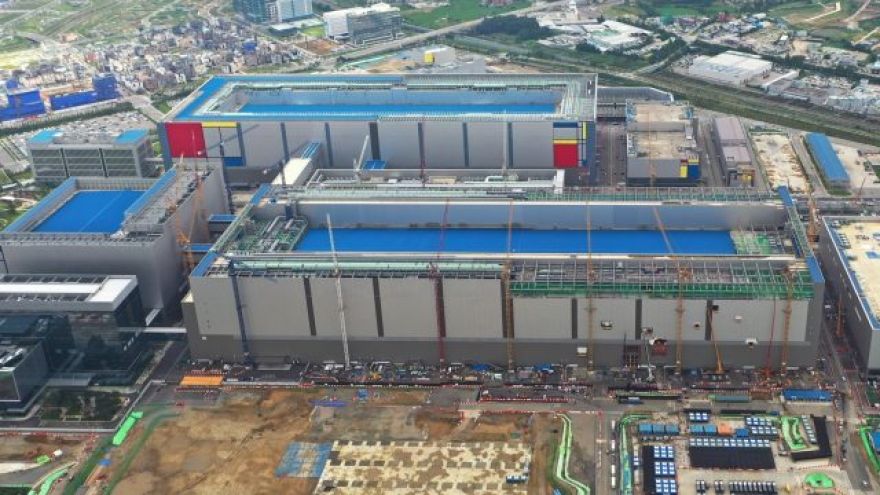
Samsung May Build $10B Foundry in Austin, Texas
TSMC recently announced it would spend an extra $10 billion on capital expenditures in 2021, and it sounds as if Samsung may approximately match the increase. There are new reports that the Korean giant could build a new $10B foundry in Texas to handle advanced logic manufacturing at the 3nm node and below.
Samsung and TSMC get compared a lot — they’re the only two foundries currently operating on the leading edge — but the markets they serve are rather different. Samsung’s foundry business handles manufacturing its own Exynos smartphone chips, alongside any other custom SoC work the company has shipped for other markets.
Bloomberg writes that Samsung wants to begin construction of the fab this year, install equipment in 2022, and have the plant “begin operation” in 2023. This is almost certainly a reference to some light pilot production as opposed to bringing the entire foundry fully online as a high volume manufacturing facility. It typically takes 2-3 years to build a foundry, followed by a 6-12 month manufacturing ramp. We wouldn’t be surprised to see the dates shift back into 2024, especially if anything were to delay the ramp.
Backlogs at ASML
If you want to etch wafers using EUV (Extreme Ultraviolet Lithography), you’re going to be buying from ASML. The company is the largest supplier of photolithography equipment in the world, and its production bottlenecks determine the rate at which foundry customers such as Intel, TSMC, Samsung, GlobalFoundries, and UMC can install new hardware. Unfortunately, ASML is currently experiencing a production crunch of its own.
Internal view of an early ASML EUV stepper.
After nearly a year of writing “Due to COVID-19” when discussing economic affairs, it’s almost exciting to have something else to talk about. For once, the problem here isn’t strictly the fault of the coronavirus. ASML’s issues are related to the restrictions the Trump Administration has put on high-end semiconductor shipments to certain Chinese companies. When it became clear that Huawei was going to lose access to advanced nodes at TSMC, the foundry delayed a few of its EUV machine purchases. Then, late last summer or early fall, Intel also pushed back a few EUV buys of its own. As a result of these delays, ASML cut its own production plans and it would need parts for fewer machines than originally anticipated.
Here’s where COVID-19 jams its head back into the picture. The huge surge in semiconductor sales over the past year ultimately led companies like TSMC to increase capital spending in 2021. Now, ASML is trying to accelerate its own production timeline two quarters after telling its own suppliers that it wouldn’t be building as much hardware in 2021 as previously anticipated. This could lead to equipment shortages through the next year or two, and limit the ability of semiconductor manufacturers to build out in the interim.
Normally, when we talk about slow timelines in semiconductor production, we’re talking explicitly about new CPU microarchitectures, meaning major node transitions. Multi-year timelines are explicitly the norm throughout the entire semiconductor design, manufacturing, and packaging chain.
If these rumors are true, it suggests Samsung has no plan to step away from leading-edge manufacturing any time soon and may attempt to wrest top-tier customers away from TSMC again. History suggests that won’t be an easy task. GlobalFoundries made similar promises after it spun off from AMD. Samsung also had trouble with its 8nm yields on Ampere, though that situation may have abated since. Nvidia acknowledged supply constraints on Ampere in early December, but it announced it had inked a deal with Samsung to supply additional Ampere cards a few weeks later. The Korean company hopes to ship a 3nm node to compete with TSMC in 2022, according to remarks made last year by Park Jae-hong.
Feature image is of Samsung’s Line 2 foundry.
Now Read: